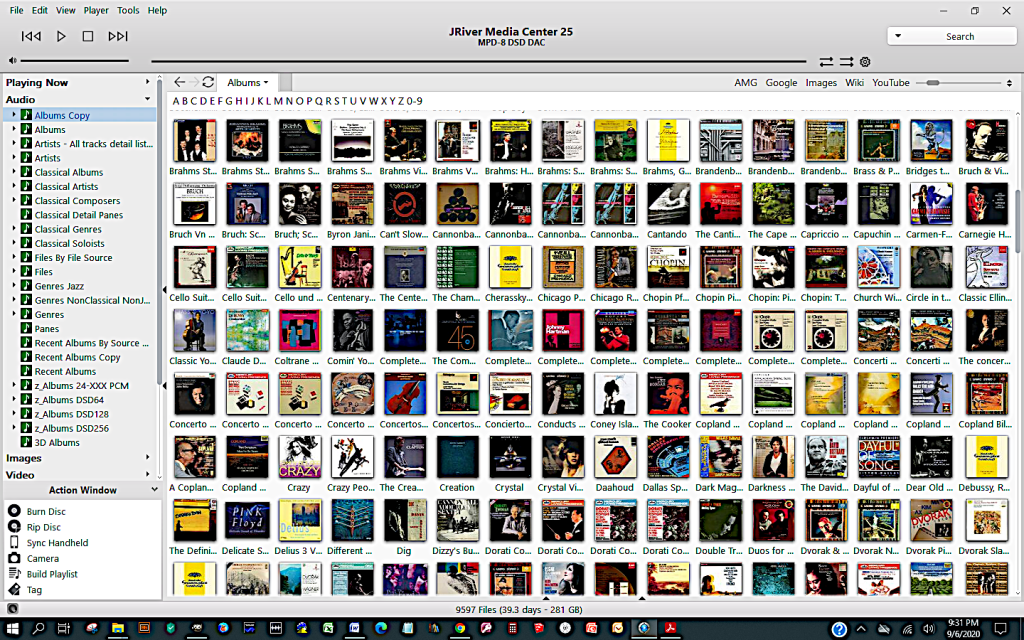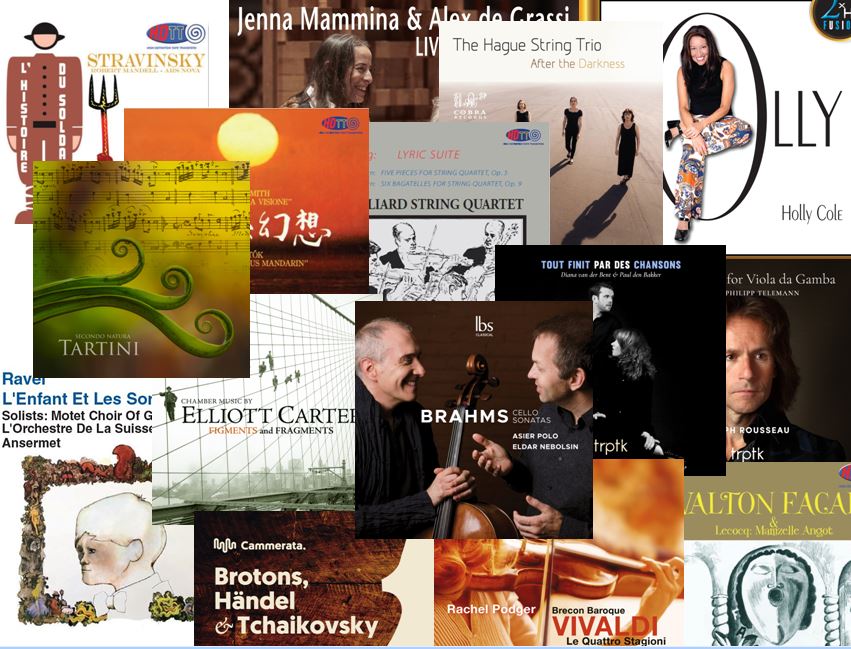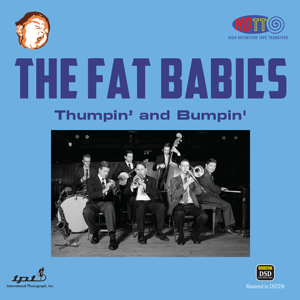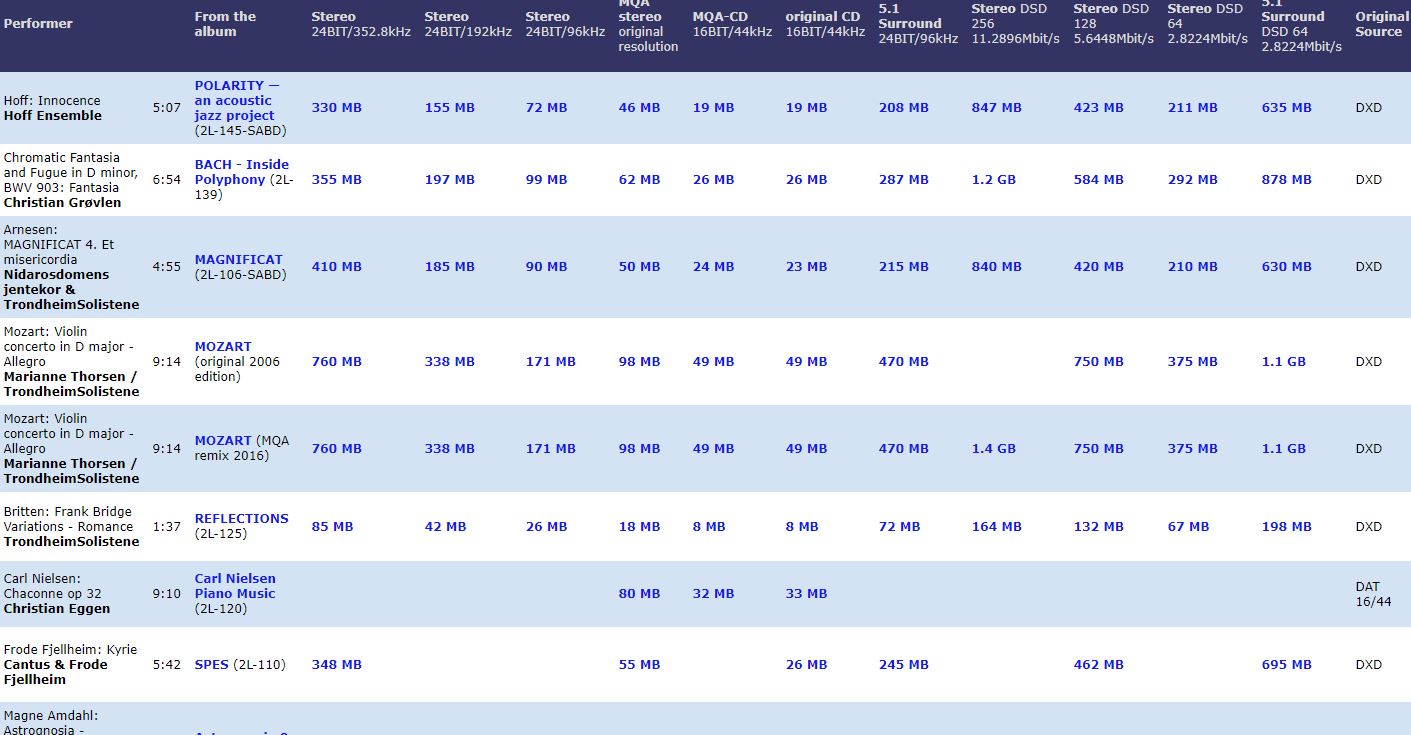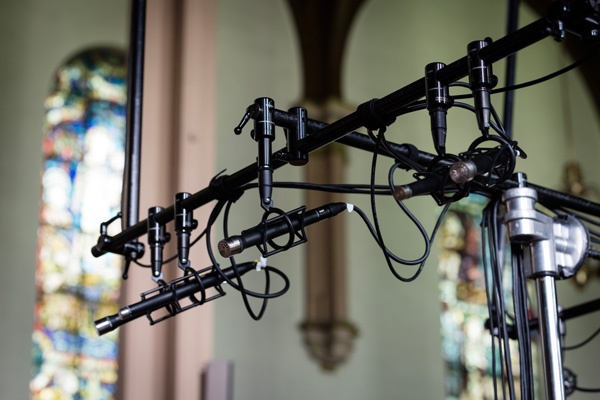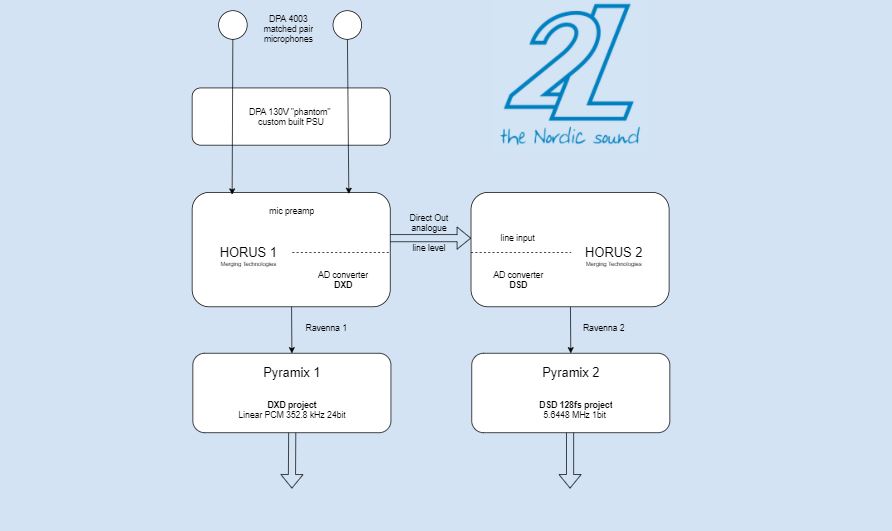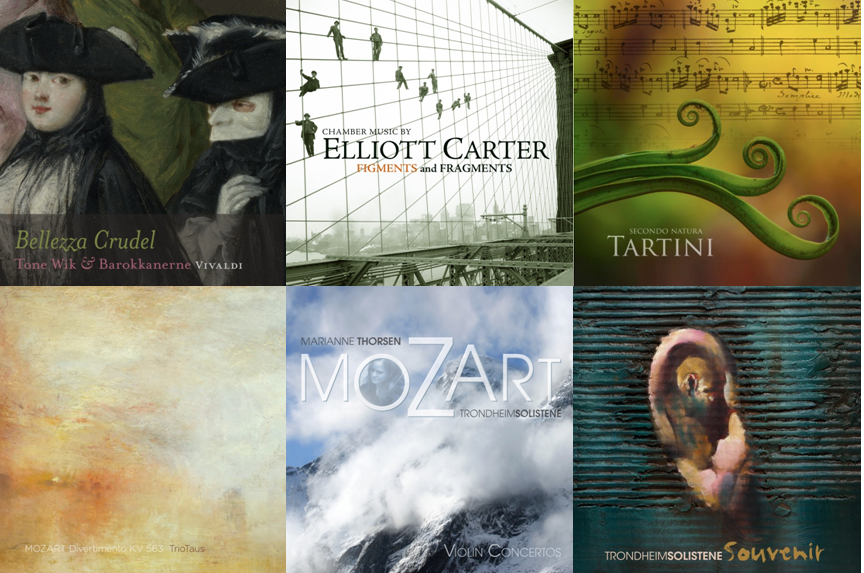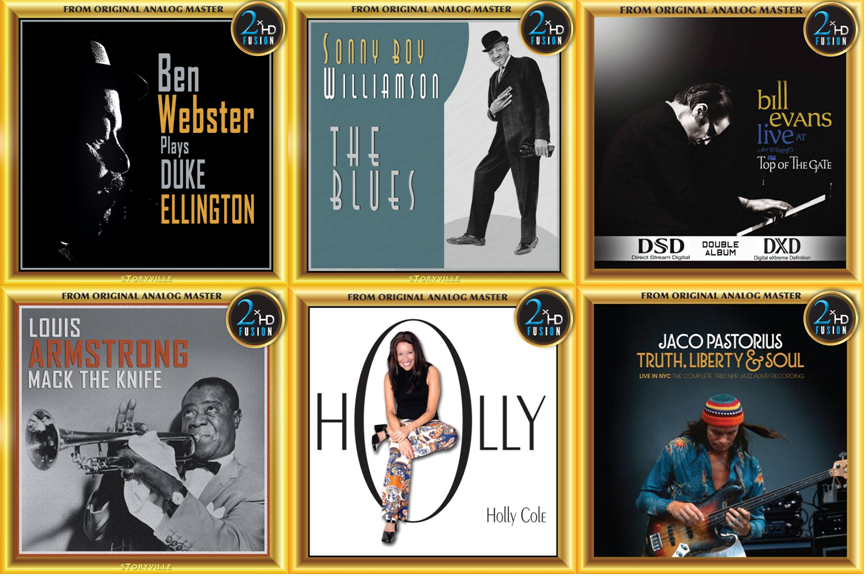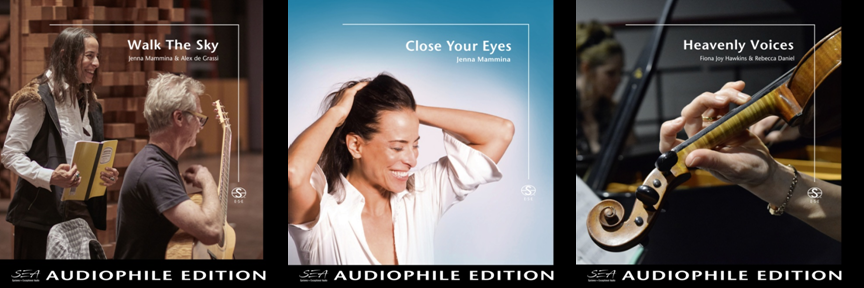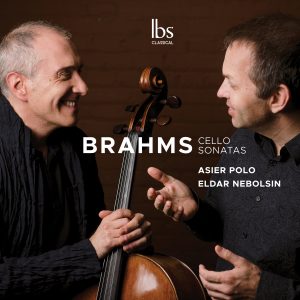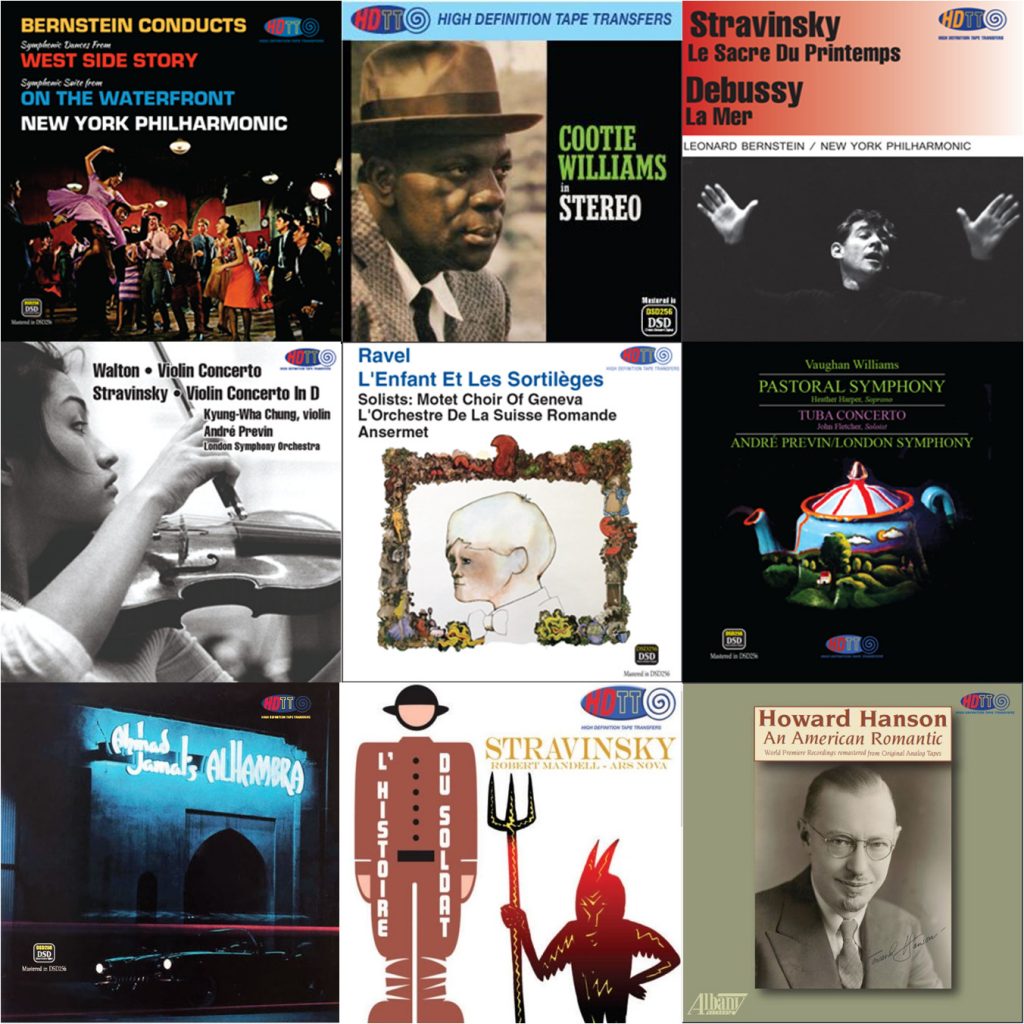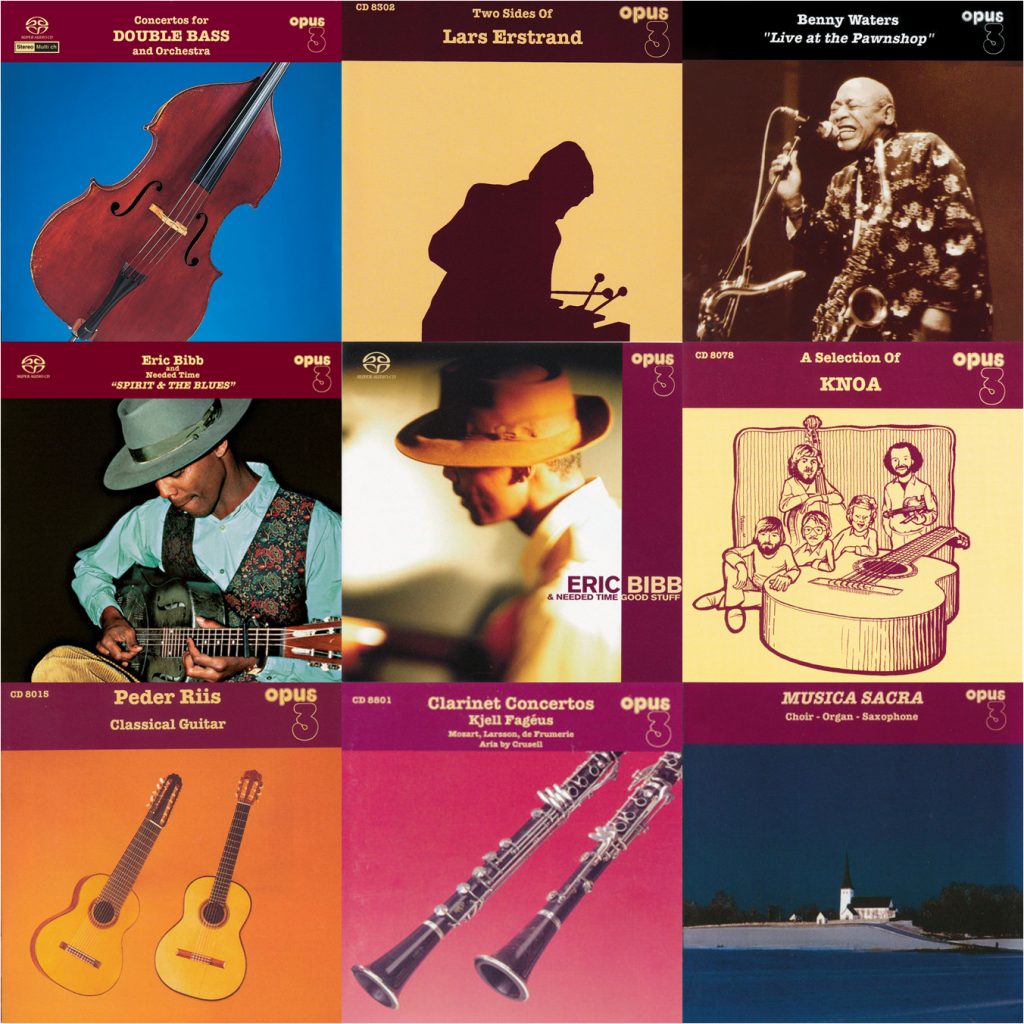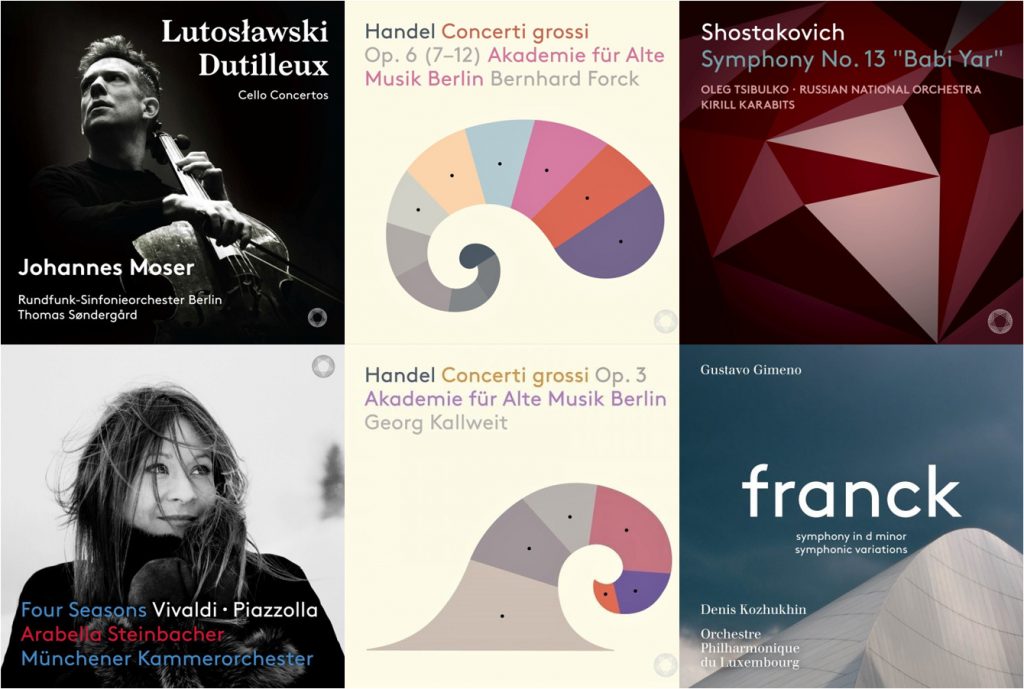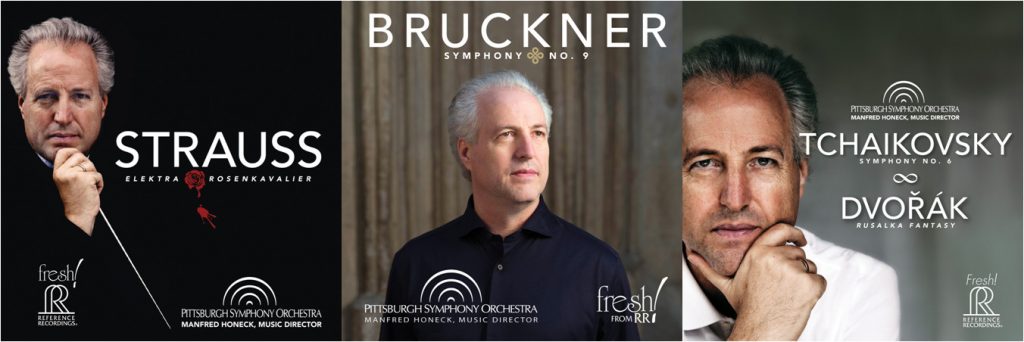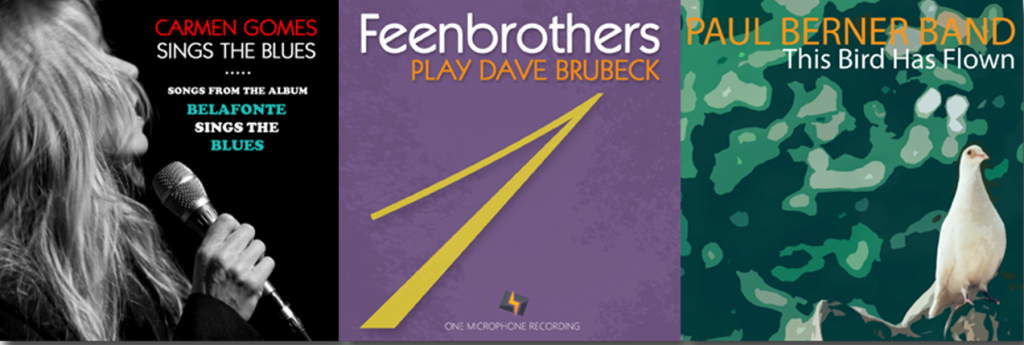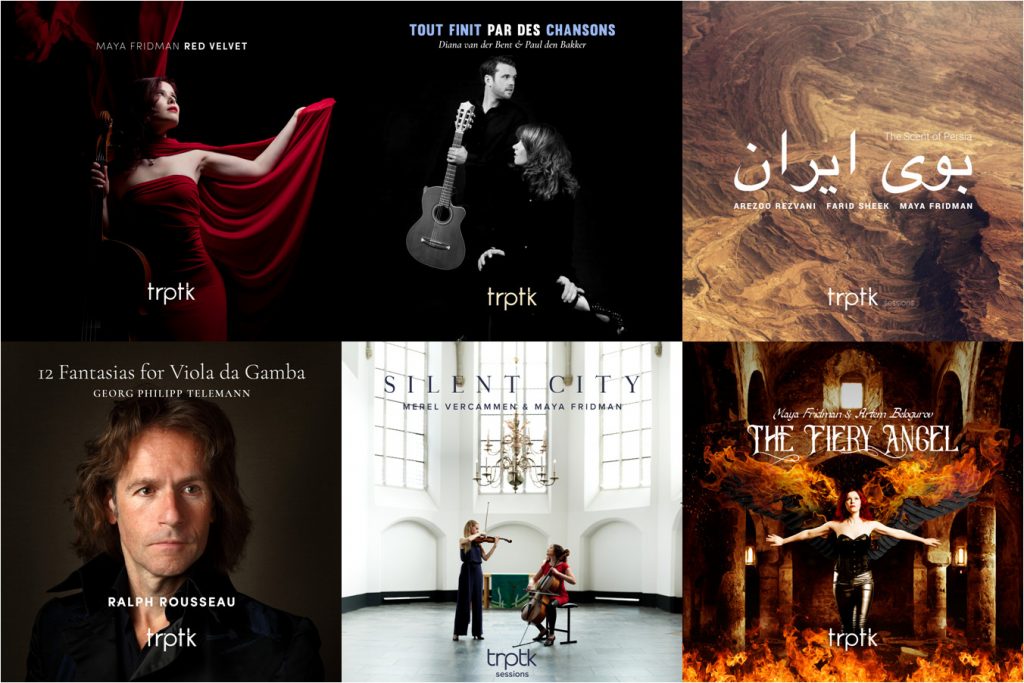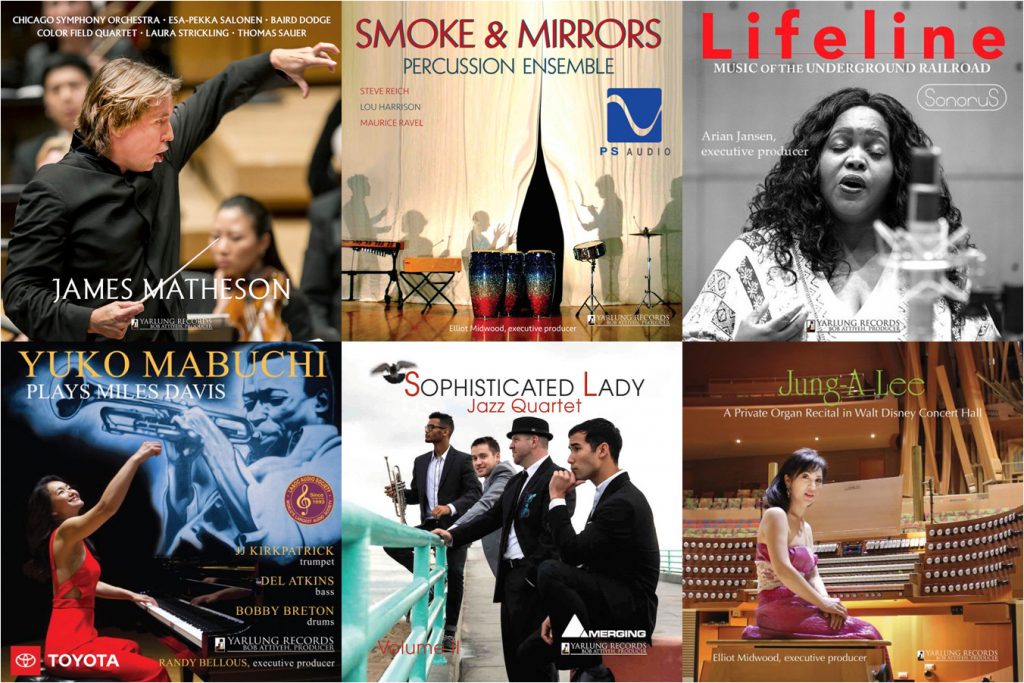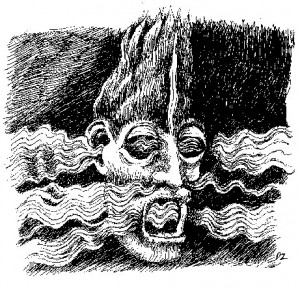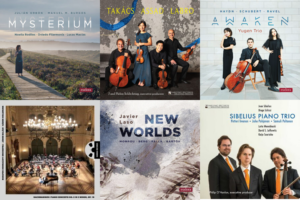Part 4 – So what does the new system sound like and what are we listening to?
Fair warning: my focus is on classical music with a smattering of jazz and acoustic. So, my comments about sources and music and what we're excited about will lean heavily in this direction.
In earlier parts of this essay, I've discussed what launched us on this journey, to where our research and listening priorities directed us, and how we put it all together (Part 1, Part 2, Part 3). If you've followed along, you may have gathered that we're quite pleased with the outcomes:
- Sound quality - Truly stellar, sends us to the moon, sound quality playing DSD256 and DXD recordings. The music we're now enjoying meets all of our expectations for truly great music playback in our home. Can it be made better? Yes, most probably. This audio journey is a continuing road.
- Access – I might say "convenience," but it is really about access. Ann can now FIND any piece of music she's inclined to listen to. She's loving it (and I am, too). This has never been the case in our music system before. There was always the challenge of finding that piece of music on the shelves—Where is it? What album is it on? Where is that album hidden along these dozens of feet of shelving? In our new system using a database as our music server, we can just search the database, click on a track and the music plays. Amazingly convenient. But, more importantly, accessible. And how many covers of Goodbye Pork Pie Hat are there?
- Better than vinyl? – Hmmm, I said we wouldn't make that comparison. But, sometimes... Yes.
So moving forward in this Part 4, I'd like to share with you a bit about the music we're finding that excites us, the quality we're hearing in some hi res digital audio recordings today, and the sources for music downloads that we've come to trust and rely on.
But first, something I NEVER expected to say…
Redbook CD files can sound great! I never thought I would hear a CD file that I'd say this about, but today I'm enjoying many of the 16-44 files we have in our library. So what changed? Technology evolved, the engineers working on digital learned a lot, it made a difference in what today's DACs are able to do with yesterday's files. Just this morning we were listening to Solti's 1982 performance of Mahler's Symphony No. 3 on a Decca CD box set reissued in 2017.
Wow! We were amazed at how good it sounded. Open, transparent, highly resolving, instrumental timbre spot on... The great Chicago Symphony Orchestra's brass section sounded out in full glory. No, it did not sound as good as recordings we've listened to that were released in high resolution digital. The sound still had an overall graininess to it and a lack of timbral density. But it was good enough to make this former vinylholic very happy—I was able to enjoy the music. Digital artifacts were not getting in the way.
This ability to listen enjoyably to lower sampling rate files is one of the most notable aspects of listening with the Playback Designs MPD-8 DAC. It has this uncanny ability to make "lesser" digital files sound better than they have any right to sound. I'm even able to listen to lossy YouTube MP3s with considerable enjoyment. Hopefully you are hearing this, too, with your DAC of choice.
This is a joyful discovery. Why?
Because the vast majority of the digital music available is still just 16-44. If we're lucky, we are now finding more and more music at in 24-bit word depth, which is a nice improvement.
To learn that today's playback technology can make the 44.1kHz/16-bit Redbook CD standard enjoyable is a wondrous discovery. Just look at all these 16-44 files in a screen shot of my library below. Notice where the scroll bar sits – this view continues to scroll quite a bit further. My point being, I am delighted I can say that I'm enjoying 16-44 playback today using today's technology.
And still, I'm eager for higher quality sound if I can get it. Recordings like these shown below in DXD and DSD256 resolution offer truly ear-gratifying sonics that simply leave my 16-44 files in the dust. They tickle the audiophile in me as well as the music lover…
Regrettably, most of the labels and music download sites continue to tout 24-bit PCM as being "studio quality" high resolution. And when offering 24-bit, they frequently are still limited to sampling rates of 44kHz to 96kHz, not 192kHz which is where some semblance of the magic begins to happen for my ears. One simply cannot find 24-352.8 (DXD) in the vast majority of music download sites, and certainly not DSD. All of which is a shame and why I'm offering this article. Read on, my friends. There is hope!
The websites where we're finding great high resolution recordings and why we shop there
The challenge with high resolution music downloads is finding downloads that are not simply upsampled from lower res files. Beware the online retailers who present such files for sale. Of course, much (most? all?) of the problem stems with the labels themselves. I'm told they have often taken PCM recordings…some as low as 44.1kHz/16-bit…and converted them to DSD for download sources. Sorting all of that out takes the use of a frequency spectrum analyzer, which not everyone is equipped to do. Thus many retailers are at the mercy of the files sent to them by the major labels.
The online retailers I've come to trust most for downloading hi res music clearly identify the provenance of the files they offer. They present album information that tells me in what format and resolution the file was originally recorded and what was the file format and resolution used as the "edit master" in creating the various resolution formats being offered on their site.
The sites I've found that demonstrate this best practice include:
NativeDSD – NativeDSD is my favorite source for the broad range of high resolution current recordings I seek. They represent over 70 labels making contemporary recordings with current artists using some of the best digital and analog recording technologies today. NativeDSD will often have the higher resolutions of albums offered only in lower resolution on other sites. More importantly, I've come to trust NativeDSD for the provenance information they provide. Under "Additional Information" for each album, NativeDSD will lay out the format and resolution in which the recording was made originally. They tell us whether the source is analog tape, DXD, DSD64, DSD128, or DSD256. (Yes, there are some misses here and there because adding this information is a manual process. But I've found that if I ask, they will try to find an answer for me.)
NativeDSD is clear about their policy on recordings: they only offer files that were originally recorded in either analog, DSD or DXD. If recorded in analog, they receive and work from a tape transfer made to either a DSD or DXD. If recorded in DXD (or transferred from analog tape to DXD), "NativeDSD acquires the label's original DXD edited master, and using Merging Technologies Album Publishing, create first generation DSD64, DSD128, and DSD256, as well as a DXD FLAC deliverables." (quote from their Higher Rates Program page) They do not accept or work from files that originate as a PCM file in less than DXD resolution. (Yes, DXD is PCM at 24-352.8 resolution.)
All of this is laid out clearly on their website, and I have high confidence about what is actually being offered when looking at NativeDSD's catalog.
High Definition Tape Transfers (HDTT) – HDTT specializes in transfers of (typically) commercially released 15ips reel-to-reel tapes to high resolution digital files. HDTT's founder, Bob Witrak, has consistently sought to improve the transparency and accuracy of his transfers using some of the best analog-to-digital transfer technology available today. His site is a treasure trove of the great recordings that have long populated various "Best of" and "To die for" lists over the years. When browsing HDTT's catalog I feel like I'm walking through the best of my vinyl collection but in high resolution digital sound. Some of these recordings sound even better than the best of my vinyl.
And, you will also find many excellent recordings that never graced an LP but that Bob has been able to source through his extensive network of reel-to-reel enthusiasts and recording engineers. If you love classical music and jazz recorded during the golden age of analog stereo recordings, HDTT is a wonderful treasure.
Contemporary recordings of excellence are also represented here, such as those being recorded to analog tape by Jonathan Horwich at International Phonograph, Inc., and transferred directly to DSD256. Just try out The Fat Babies – Thumpin' and Bumpin' in DSD256, for a thrill.
Blue Coast Music – Cookie Marenco, founder of Blue Coast Records and recording engineer par excellence, brings her wonderful acoustic album recordings and her knowledge of DSD to her music sales site, Blue Coast Music. The file downloads from Cookie's own Blue Coast Records label are either transfers to DSD from the original analog tapes or direct to DSD recordings. Other albums carried in the store from other labels may be PCM recordings but all will have their provenance clearly identified.
The Spirit of Turtle – Founded by recording engineer/producer Bert van der Wolf, the music sales site The Spirit of Turtle offers a very nice array of DXD and DSD256 recordings in both stereo and multichannel from both the Challenge Classics label and other projects by Northstar Recordings (Bert's recording company). These are supremely well engineered recordings, with the utmost care given to both the recording venue and miking, and all originally recorded in DXD. Quite normally on offer are one or two samples for free download. I encourage you to check them out for their superb sound quality. (As of this writing, the website is best navigated with an older browser like Safari, Firefox or Internet Explorer. I had difficulties using Chrome or Edge and was told that a complete re-work of their web platform is under design to solve this.)
Other sites that I've found to be good resources of high resolutions downloads, but which are not as clear about the provenance of their files and thus requiring a bit of trust, include:
Acoustic Sounds' Super HiRez – [No longer in operation as of December 31, 2020.] Another resource for lovers of hi res downloads and carrying a broad selection of music. I've purchased records from Acoustic Sounds for decades and have come to trust Chad Kassem. Accordingly, while the website may be rather opaque as to the provenance of the recordings offered, I've chosen to extend my trust in making purchases here.
e-Onkyo – e-Onkyo Japan has long been a source of SACDs and digital downloads. Regrettably, digital downloads are no longer available to purchasers outside of Japan due to licensing restrictions. The e-Onkyo site that once served the U.S., UK and Germany closed in October, 2019. Because of their large catalog of DSD offerings, I've listed this site for those readers who may have access geographically.
HDTracks – Carries a very broad selection of music with DXD and higher rate DSD downloads now showing up. Keep up the work!
HighResAudio – An online streaming service based in Germany with a download store available for purchases even without a streaming subscription. They carry principally PCM files up to 192kHz, but a few DSD downloads (mostly DSD64 with some DSD128) and a very limited number of DXD downloads are beginning to show up, so I've included them here. Let's hope they're able to expand their listings of these formats.
Qobuz * – I've not used Qobuz, but I get very positive reports from audio friends "whose ears I trust." Many of you may be aware of Qobuz as a streaming site, but it offers retail sales whether you have a streaming subscription with them or not. Their catalog is extensive and diverse.
* Qobuz offers a broad range of music, but nothing in DXD or DSD. I list them here simply because they do provide such a broad selection of music. Same comment will apply for eClassical.com and a number of other sites not listed here. Just be aware that, where any of these sites list an album at 24-96 or 24-192 from a label also carried by NativeDSD, NativeDSD is likely to offer that same album in DSD or DXD. (Lesson: check NativeDSD if the label is represented there.)
If you know of additional sites carrying DXD and DSD downloads, please share a link to the site in the comments.
Note: any of these sites may have distribution agreements with the labels that restrict the countries to which download purchases may be authorized. I can only say that the sites listed do work for my location in the U.S., with the exception of e-Onkyo.
Understand with what format your DAC performs best
DACs all have differing strengths. They all process the incoming digital signal differently. Spending some time in careful listening to samples demonstrating differing file resolutions will lead you to an answer for what format will be best for you, your listening priorities and your audio system. But, be careful to listen apples-to-apples. Here are some sites offering free sample file downloads that will help you in this effort:
2L HiRes Download Test Bench – 2L is a Norwegian label that makes truly exceptional recordings that are very transparent. Their albums are originally recorded in DXD and are made available for download in a range of DSD resolutions and in DXD. On their Test Bench page, 2L has made available sample tracks in various file resolutions all taken from the same DXD master.
Direct DXD vs DSD128 comparison – 2L has also made available a direct comparison of DXD to DSD128 recorded sound by sending the microphone feed simultaneously to both a DXD and DSD recording change from the same microphone feed.
The only limitation in this comparison is that the DSD recording is to DSD128 and not DSD256. If anyone knows of a similar single-microphone-feed comparison that compares DXD to DSD256 and can be freely downloaded, please leave a link in the comments! I'd like to listen to it.
Blue Coast Music – Offers some free downloads of the same recording processed into differing formats and resolutions. Their Samplers (not free) are also a good way to experiment.
DSD-Guide.com – Not a music store but a great resource for understanding DSD and teaching yourself about sound quality. Highly recommended is their How to do a comparative listening test written by Cookie Marenco.
Sound Liaison – Offers a free test track in all the different formats and resolutions for you to use in comparing through your DAC. All the formats originate from the same DXD file in which the music was originally recorded.
Why I look for the file format that is generationally closest to the original master file
I have been told by two different professionals in the digital audio field, a mastering engineer and a DAC designer, that every conversion of a file leaves behind some number of artifacts that can be audible. It is simply mathematically unavoidable. Their advice: always seek the file that has had the least number of conversions from the master file itself. That file will have the fewest artifacts left behind from the conversion process.
If this sounds suspiciously like what we worried with in dealing with multiple generations of analog tape, sonic loss when copying generation to generation past the master, the analogy certainly is apt.
My listening comparison confirms this for me when listening in my system. The differences are subtle, but observable. So, I now always look for the file that is as close to the "edit master" file as I can get. If the recording was made in DXD, I will seek to purchase the DXD release of that recording in expectation that it is the most direct copy of the edit master that I can obtain. I'll trust to my DAC to handle the rest. As much as I like DSD256 recordings, I do not automatically reach for that DSD256 option if the recording was originally made in DXD. YMMV, so do some careful listening in your own system.
Of course, if the recording was originally made in DSD256, and I can acquire it in DSD256, I'm even happier!
The caveat: every DAC design is different. Some DACs may simply work better when provided a file format which the design of the DAC processes with greater ease and fidelity. Your ears will know if you do some comparative listening.
Recording labels that have me jumping for joy
I have not listened to everything by any means, but I do want to share with you some recording labels releasing recordings in DXD and DSD256 that simply make me joyful for the sound quality they are delivering. I have lots more that I want to hear, and I welcome you to add your favorites in the comments.
I've listed a recording from each label below that is worth hearing and worthy of being in your collection. There are many more. Consider this a suggested starting point. The order of listing is alphabetical and has no significance. Clicking on the album covers will take you to a sales site with DXD and DSD256 downloads of the albums.
[A note regarding cover images: Cover artwork may display the SACD logo. Don't be put off. This is simply re-use of the existing artwork on hand from the SACD release where there was one. These albums are all available in transfers to DSD256 or DXD from the original analog, DXD or DSD256 recording. Click on an image to open a retail sales site with the files available for purchase and download.]
2L – I mentioned 2L earlier in this article for their gift of their Test Bench sample recordings in different resolutions, each converted from the DXD master. Go listen to some of the samples or try one of these albums.
2xHD – This label specializes in taking some of the highest quality analog master tapes from a variety of labels and transferring them to high resolution digital using their proprietary system. The equipment used on making transfers is selected based on the project at hand, to excellent results. 2xHD has three additional "sub-labels" 2xHD – Storyville, 2xHD-Naxos and 2xHD-Ondine.
Blue Coast Records – Cookie Morenco, founder and recording engineer par excellence, records her wonderful acoustic albums entirely in either reel-to-reel analog tape or DSD. No PCM. Her recordings are sold through her retail record sales site, Blue Coast Music.
Channel Classics – Many albums are now being recorded directly in DXD and DSD256 and available for download in those formats both at the Channel Classics website (which links into NativeDSD for order fulfillment) and The Spirit of Turtle website (mentioned earlier) if the recording was a Northstar Productions recording. These following suggested albums were all recorded direct to DSD256 and downloadable in DSD256:
Cobra Records – Founded by recording engineer Tom Peeters, Cobra is focused on making acoustic recordings of chamber music in the highest possible quality in stereo, multichannel and binaural formats. Binaural recordings utilize the Neumann artificial head in a concurrent recording feed to the stereo and multichannel recording feeds. Earlier recordings were in DSD64 but in more recent recordings Cobra has migrated to DSD256, as in the three remarkable albums below.
Eudora Records - Another of the few classical music labels recording directly to DSD256 rather than DXD. Outstanding! For a sonic treat, try any one of these wonderful albums released in DSD256.
IBS Classical – Based in Madrid and founded in 2012, this label has rapidly gained wide recognition for the quality of its performing artists and sound. I intend to write more about this particular recording of Brahms Cello Sonatas which has very much impressed me, and I will be looking forward to listening to more recordings from IBS Classical.
High Definition Tape Transfers (HDTT) – I've listed HDTT previously as a retail sales download site I rely on for high resolution files. I'm listing it again here as a label because I consider the work Bob Witrak is doing as too import not to highlight. These are just several recordings from among many in the HDTT catalog that every audiophile should have in their library. I'll be writing more about them to be sure!
Just Listen Records – Just Listen is the recording project of the NativeDSD team of Jared Sacks, Jonas Sacks and Tom Caulfield. Recording directly to DSD256, the results are transparent and stunning. Recording directly to DSD256 means no editing, no remixing, just live music to file. The results are direct, transparent and lively music making. Here are three wonderful examples to get you started on what I promise will be a most enjoyable exploration of good music in great sound.
Northstar Recordings – Northstar is not a record label per se, but a recording production and engineering firm founded by Bert van der Wolf. For these Northstar recording projects, Bert has negotiated the licensing privileges to release the album in DSD and DXD through his sales website The Spirit of Turtle (listed above). These are supremely well recorded performances originally recorded in DXD and available in both DXD and DSD downloads. Highly recommended!
Opus 3 Records – Opus 3 made strictly analog recordings from the 1970s until 2000. At one time my record library held all of their recordings released on vinyl. I collected them over those years because they are such wonderful, natural, listening experiences. I'd come back to them time and again, and I regularly played them as demonstration recordings to share with friends.
The big virtue of Opus 3 recordings is that they were all recorded in natural acoustical environments, such as concert halls, churches, blues & jazz clubs, as suitable to the music. One could listen as though one were invited to sit in on the performance with the audience. The recordings just sound authentic. Now Jan-Eric Persson, recording engineer and founder, is bringing these marvelous recordings back to us in excellent transfers to DSD. As of this time, the transfers are DSD64 and DSD128, not DSD256, but these recordings are so important that I'm making an exception to bring Opus 3 to your attention.
Pentatone – long a proponent of DSD recordings, in both stereo and multichannel, Pentatone is today releasing more albums originally recorded in DXD or DSD256.
Reference Recordings – Yes, you know this label. And they are offering some great music recorded direct to DSD256 and DXD. The three below are direct to DSD256—you should hear them!
Sound Liaison – Sound Liaison was founded by a musician and a recording engineer with the goal of building a bridge (liaison) between the studio (engineer and musicians) and the people who love to listen to beautiful music using high quality audio equipment. They record in DXD.
TRPTK – Founded by recording and mastering engineer Brendon Heinst, every album I've heard is a sonic wonder. They're all recorded in DXD, but I'm not going to argue with the process that achieves such wonderful results. Here are six. I promise you'll be impressed by any one of them. I'm looking forward to exploring more.
Yarlung Records – Founded by Bob Atiyeh, Yarlung supports emerging artists through its non-profit foundation, Yarlung Artists which is funded by sales of the superb recordings released by Yarlung Records and tax deductible contributions. It is a unique and far-thinking undertaking to support artists as they begin their international careers. Yarlung records simultaneously to analog tape and DSD256, releasing the analog tape recordings in high quality LPs and the DSD recordings in downloads via NativeDSD. (CDs, analog tapes and FLAC downloads are also released.) Bob produces his recordings with a philosophy of minimal miking and the results are superb. As one example, consider the recordings of performances by Antonio Lysy or Yuko Mabuchi recorded in 30ips analog tape and transferred to DSD256.
The recording engineering and mastering always matter
Most of this discussion has been about high resolution of the digital information, and that is important to my ears. But equally important to the quality of sound I seek, and perhaps even more important, is the recording engineering and mastering. We just haven't talked about that in this article. But I don't want to close without affirming this point.
To my ears, the simpler and cleaner the recording chain, the better the sonics. This is why I prefer minimally miked recordings and minimally post-processed recordings. I'm looking for transparency in the sound and I greatly prefer recordings that capture the natural acoustic environment of the performing space. Many, if not most, of the labels I've listed above share a similar aesthetic in their recording philosophies. And I suppose that's a big factor in what got them listed here.
This is just an introduction, a starting point...
I feel that I'm just scratching the surface on discovering labels making excellent recordings direct to DXD or DSD256. Yes, there's a lot of outstanding music available in other formats, and I won't ignore them for my personal listening, but these truly high resolution recordings are my goal and what I'm seeking to share with you.
If you have suggestions for labels recording directly to DXD and DSD256 and releasing digital downloads in DXD and DSD256, please share them in the comments.
In future articles, I will be writing about specific albums that I'm listening to. My focus will be on albums recorded directly to DXD or DSD256 (or recorded in analog and transferred directly to DXD or DSD256) and available for download in DXD or DSD256. I hope you will join me for the conversation.
Yes, There Really is Music After Vinyl - Introduction
Yes, There Really is Music After Vinyl - Part 2
Yes, There Really is Music After Vinyl - Part 3
Downsizing Journey Update: Four Years with the Playback Designs MPD-8
All images are the courtesy of the respective labels and distributors.





